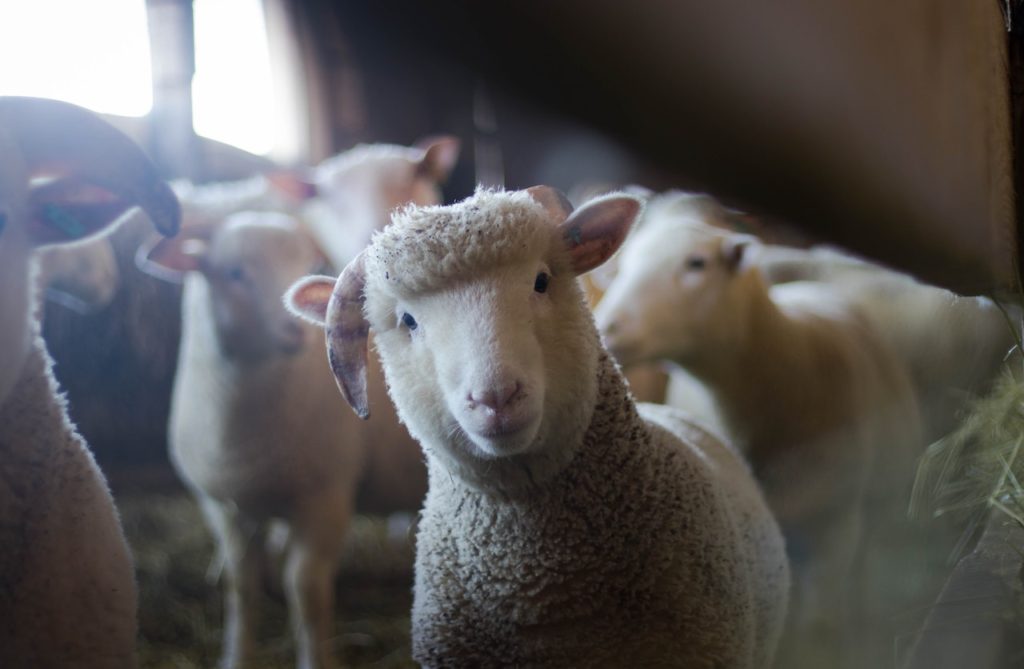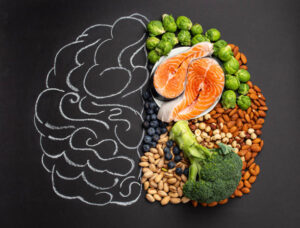It is impossible to ignore the devastating environmental dangers of meat consumption and its effects on climate change – rising sea levels, high temperatures, and severe weather events. These are becoming more common.
Although it is impossible to control many factors contributing to climate change, there is one step we can take to make a significant difference – reducing our meat consumption.
The History of Meat Consumption

How long has humanity been eating meat? Anthropologists have explored this question for a long time.
Human ancestors began eating meat around 2.6 million years ago based on the cut marks found on the bones of large herbivores and the teeth of hominins.
The energy-rich protein source likely played an essential role in human evolution, though these ancient ancestors were more likely to scavenge meat than hunt for it.
Some experts believe meat helps our brains evolve by increasing our energy intake and making them larger and more complex by increasing our energy intake.
Meat consumption also affected the digestive system. The gut shrunk in human ancestors over hundreds of thousands of years, allowing the brain to use more energy.
Hunting and gathering were common around 300,000 years ago when humans emerged. About 10,000 years ago, our ancestors ate meat, plants, nuts, pulses, and fruits before agriculture began.
As a result, we moved from cultivated grains to cultivated wheat, barley, oats, rice, or corn, depending on the region.
During many cultures, meat was considered a luxury, reserved for special occasions. Nowadays, it is abundant all over the world. Meat production in 2019 alone is at 325 million metric tons.
The Environmental Dangers of Meat Consumption

Additionally, it contributes significantly to global climate change by causing widespread deforestation and biodiversity loss. A factory farm’s meat production is affected by this.
The dangers of meat consumption are severe, contributing to several problems. Among them include:
1. Greenhouse gas emissions
Dangers of meat consumption include the release of greenhouse gases such as methane, carbon dioxide, and nitrogen oxide into the environment. As a result, these gases contribute to global warming and climate change.
Around 14.5% of global greenhouse gas emissions are due to the livestock sector, according to the Food and Agriculture Organization (FAO).
There are several ways in which livestock farming contributes to greenhouse gas emissions:
- Forest ecosystems are being destroyed. CO2 is emitted into the atmosphere as a result of this process.
- Livestock farming. As cows and sheep digest food, they produce large amounts of methane.
- Decomposing manure. Ruminant animals also produce methane in their manure.
- Use of fertilizers. Several nitrogen-based fertilizers are used in soybean production, which emits nitrous oxide.
2. Deforestation and land use
The number of animals raised for meat production is increasing, requiring vast amounts of land to be cleared for grazing and feeding. Cattle ranching, for instance, is responsible for 80% of deforestation in the Amazon rainforest.
The grazing and production of animal feed require a large amount of land. It could result in deforestation, soil erosion, and loss of biodiversity.
Annually, 340 million tons of carbon are released into the atmosphere due to deforestation caused by the animal agriculture industry.
3. Water usage
A large amount of water is used by the animal agriculture industry to raise and slaughter animals, which may not be typically associated with excessive water use.
Water consumption in the animal agriculture industry is accounted for by feed production. Nearly 20% of the world’s freshwater is used to produce food for livestock.
In addition to using substantial amounts of water, many slaughter methods use large amounts of energy. It takes approximately four to five million gallons of water to slaughter chickens in a single California slaughterhouse daily.
A plant-based diet has a much smaller water footprint than a meat-based diet. To produce 1 gram of protein from beef, it takes six times more water.
Water overuse has several negative impacts, including depletion of soil fertility, an increase in drought frequency and severity, and a loss of biodiversity in aquatic ecosystems.
It is also possible for animals and humans to suffer health problems due to waste from farms contaminating waterways.
4. Waste and pollution
During the processing and production of meat, large amounts of waste are generated, including manure, wastewater, and packaging materials.
This waste can harm the environment and cause problems such as soil and water pollution and greenhouse gas emissions.
5. Loss of biodiversity
Burning and clearing land for animal agriculture has resulted in the loss of a wide variety of plant and animal species.
Today, 60% of biodiversity loss is related to meat consumption when plants are eradicated and animals have no place to live.
A loss of biodiversity adversely affects an ecosystem’s ability to regulate itself, resulting both in climate change and reducing ecosystems’ ability to adapt.
6. Dangers to health
About 25 health problems, including heart disease, Type 2 diabetes, bowel cancer, and cardiovascular disease are part of the dangers of meat consumption.
Substituting alternatives to meat, such as beans, legumes, and tofu, can lower the risk of developing many of these diseases. Choosing a plant-based option for meat can improve your health.
As plant-based foods have become more readily available in recent years, many consumers are replacing meat-based products with healthier alternatives.
Meat production also harms human health because of its environmental impact and contribution to climate change.
Climate change is regarded as the greatest threat to human health by the World Health Organization.
7. Soil degradation
A lot of grazing land when raising animals. Wind or rain can wash away the bare soil caused by intensive grazing, resulting in barren lands, clogged waterways, and increased flooding risk.
The soil also absorbs carbon as plants and trees die, so it serves as a large reservoir for carbon. CO2 is released into the atmosphere as the soil is lost.
As a result of animal farming, deforestation, and other land-use changes that reduce soil, CO2 emissions have become the second-largest in the world.
8. A tipping point for the Amazon rainforest
As a result of the trees in the Amazon rainforest producing their rain, the forest remains alive and healthy throughout the year.
A more rapid rate of deforestation (for industrial meat, for example) will eventually result in the Amazon no longer being able to sustain itself as a rainforest.
Those who live in or rely on the forest directly could suffer devastating consequences.
Additionally, there could be a reduction in rainfall in South America and changes in climate patterns across other parts of the world.
9. Kills wildlife
The industrial meat industry kills thousands of species yearly by clearing forests, destroying habitats, and using toxic pesticides.
For our survival, we need a healthy environment. Natural resources such as food, clean water, and medicines depend on the abundance and variety of the natural world.
Industrial farming contributes to biodiversity loss, which may be as dangerous as climate change.
10. Increases the risk of future pandemics
A major cause of new infectious diseases is the destruction of forests and other wild areas for animal agriculture. Animals cause human diseases in three-quarters of cases.
The destruction of forests brings wildlife closer to people, allowing deadly viruses to be transmitted between them. A new pandemic is more likely to occur if we destroy more forests.
Industrial meat poses other health risks as well. Both animals and humans can contract diseases from factory farms.
Due to the crowded conditions and weaker immune systems, industrial meat farms have a greater risk of contracting diseases.
Viruses can develop more rapidly and have a higher possibility of infecting humans.
Dangers of Meat Consumption: How it Affects the Climate Change?

Compared to other protein sources, beef emits the most greenhouse gases. A 100-gram meal of beef produces 49.89 kilograms of carbon dioxide.
When we compare with carbon dioxide, methane, and nitrous oxide trap even more heat over decades than carbon dioxide.
Statistics on the Environmental Dangers of Meat Consumption
- Yearly, we raise and slaughter over 88 billion land animals for food.
- An average pig factory generates as much raw waste as a city of 12,000 inhabitants.
- At least 16.5% of global greenhouse gas emissions are because of the animal agriculture industry.
- Although animal agriculture has an environmental impact, it only provides 18% of global calories.
- A total of 44% of livestock greenhouse gas emissions are methane and 29% are nitrous oxide.
- Over a third of the planet’s habitable land is currently dedicated to livestock farming.
- Meat and dairy industries are responsible for roughly 14.5% of global greenhouse gas emissions, according to the UN’s Food and Agricultural Organization.
- Carbon emissions are undeniably linked to climate change, as we discussed in our post on reducing your carbon footprint.
- To produce 1 kilogram of meat, it takes anywhere from 5,000 to 20,000 liters of water.
-
- A variety of fruits and vegetables, whole grains, legumes, nuts, and legumes are included
-
- Eggs, dairy products, poultry, and fish, as well as small amounts of red meat, can all be included in moderate amounts
-
- Produces food with minimum use of antibiotics and hormones
-
- Ensures that food packaging is plastic-free and derivative-free
-
- Saves food and reduces waste
Is it Then Better to Give Up Eating Meat?
Answers to this question are not precise. In the end, it’s a matter of personal preference. There are many environmental dangers of meat consumption, but we haven’t discussed the ethical and cultural aspects very much.
There are, however, several reports and studies that recommend reducing the dangers of meat consumption, such as that of the Intergovernmental Panel on Climate Change (IPCC).
Even though the report’s experts don’t want to tell people what to eat, they do emphasize that “it would indeed be beneficial to both the climate and human health if people consumed less meat in many rich countries, and if political incentives were created to that end”.
Consequently, although individual choice plays a significant role in reducing the dangers of meat consumption, policy changes must also be made by governments and organizations.
Which Diet is Best for the Environment?
In our post about the Top 10 Sustainable Green Initiatives, we discussed quite a few suggestions for protecting the environment.
Generally, a sustainable diet refers to the kind of food we eat, its distribution, and its packaging. This food is capable of decreasing the environmental dangers of meat consumption.
According to FAO and WHO, a sustainable diet consists of:
How to Get Involved
As meat consumption significantly impacts climate change, replacing meat in your diet with plant-based alternatives is one of the most effective ways to reduce your ecological footprint.
Even if you aren’t quite ready to switch, reducing the quantity of meat you eat can be a good first step in lowering the dangers of meat consumption.
Educating others about the relationship between animal agriculture and climate change can also help in the fight against climate change.







